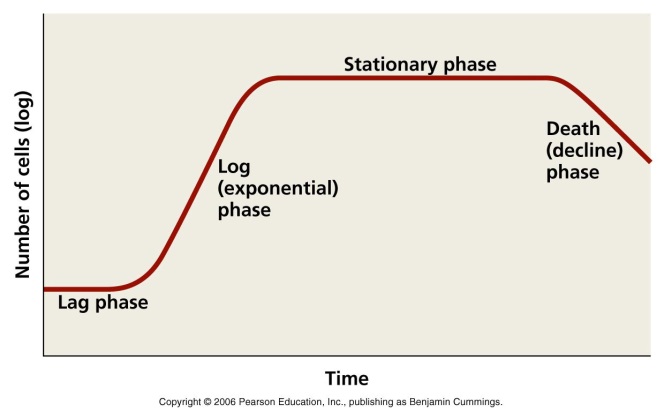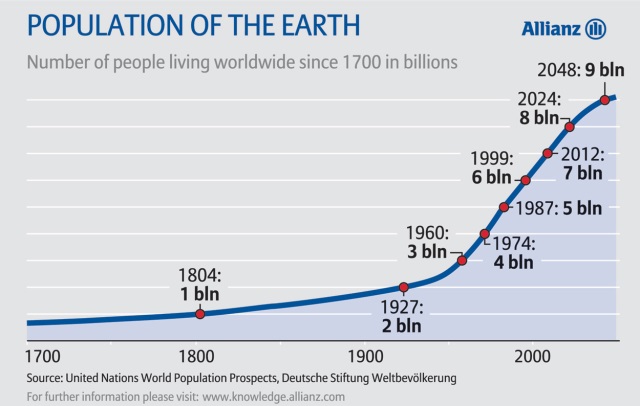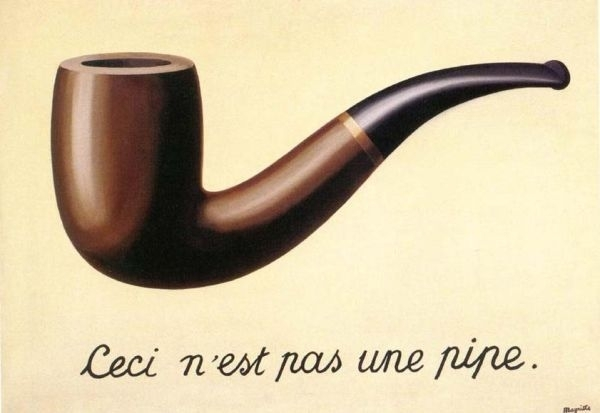Team:Paris Saclay/Ethics/Reflection about Artificial Food
From 2014.igem.org
(→Would population accept artificial food ?) |
(→What could be the impact of artificial food on the society ?) |
||
| (3 intermediate revisions not shown) | |||
| Line 42: | Line 42: | ||
==What could be the impact of artificial food on the society ?== | ==What could be the impact of artificial food on the society ?== | ||
| - | One can imagine that the development of the production of artificial food will lead to a deep changes in the society. Some companies already work on producing artificial food in vitro or by 3D printing. However, | + | One can imagine that the development of the production of artificial food will lead to a deep changes in the society. Some companies already work on producing artificial food in vitro or by 3D printing. However, the coming of artificial food would led to strong economic and social issues as agriculture is important for all farmer around the world. |
| + | This question is not a new one as agricultural industrialsation (tractors ...) have already impacted the role of humans in agriculture. However, the coming of artificial food would emphasize the controversy about humans replaced by machines. Are humans becoming useless ? | ||
| + | Furthermore, does scientist would be the farmer of the 21th century? | ||
The economic system would be shaken: increase of unemployment for farmers and agricultural companies, appearances of new professions, new market around artificial food. | The economic system would be shaken: increase of unemployment for farmers and agricultural companies, appearances of new professions, new market around artificial food. | ||
However, beneficial consequences may be also visible. Air and soil pollution may decrease and quality of life may improve especially in counties where pollution is currently a big issue. | However, beneficial consequences may be also visible. Air and soil pollution may decrease and quality of life may improve especially in counties where pollution is currently a big issue. | ||
Latest revision as of 03:58, 18 October 2014

Contents |
Reflection about Artificial Food
Introduction
The human population strongly increased passing from 3 billion in 1960 to 7 billion in 2011, and forecasts predicted that population will reach about 9 billion people in 2050. Furthermore, increasing food production capacity is mandatory. However, in 2014, it took less than 8 months for Humanity to exhaust Earth's budget for the year and the food production has a strong impact on the environment such as deforestation, competition with humans for water, green house effects, land degradation etc… For example, to meet population’s demands in 2050, FAO reported that meat production has to double. In this context, how to feed everybody in a sustainable manner is thus a very important question. An example of these challenges is the livestock production. Indeed, livestock production accounts for 18% of anthropogenic greenhouse effect, 37% of anthropogenic methane, 65% of anthropogenic Nitrous Oxide and 64% of anthropogenic ammonia. It also account for 70% of all agricultural lands and for 8% of global humans water uses. By the time, 64% of the population is expected to live in water-stressed basins by 2025, there are still hundreds of millions people that lives undernourished [1]. In this context, would artificial food be the solution?
Why seek to produce artificial food?
Studies have shown that, in the case of artificial production of meat, growing it in-vitro would ensure a decrease of 96% of greenhouse effects emission and a decrease of 7 to 45% of energy. Furthermore, only 1% of agricultural lands and 4% of the water currently devoted to livestock would be enough to produce the same amount of meat [2]. Taken together, these results suggest that artificial food would decrease anthropogenic impact on environment such as deforestation, greenhouse effect and redirect feed crop production for humans. However, other studies points out several facts. Firstly, no one knows actually which process will finally be chosen to produce artificial meat so that it is hard to estimate the future impact of in-vitro meat to the environment. Secondly, part of the production process has not be accounted such as growth factors that are needed in the industrial process Thus, their environmental impact has not been yet evaluated. Thirdly, a big part of the livestock production which needed for milk production is used to produce meat (40% in France), suggesting that a big part of the livestock is still needed. Taken together, these results shows that the benefits of artificial meat are much less than one can expect [3]. However, in the case of meat production, the scientist consensus is that artificial food would ensure better living condition of livestock.
How did we get to the point of producing artificial food ?
Considering the depletion of Earth resources and the need to feed human population as well as taking care of the environment, it is interesting to look at the definition and the nature of the living. Indeed, what is life and its meaning? This is probably one of the most important questions for mankind, and many philosophers and scientists attempted to answer this question. Thus, one of the definitions of life is the role of each individual to perpetuate the species by reproduction. As life does not exist without death, it raises also the issue of population regulation. This can be achieved in many different ways. On the one hand there are intrinsic factors: some species are non-regulated, that multiply whatever its population density is. Conversely, in regulated species, the population size is strongly related to the growth per individual. On the other hand there are extrinsic factors, such as predators, weather, disease, etc. Thus, the population dynamics depend on both intrinsic and extrinsic factors. What could pathogenic bacteria and humans in common? Both can damage their respective host (a living organism for bacteria and Earth for humans). Both can show some similarities in their population curve: a lag phase and an exponential phase. In test tubes, bacteria can then reach a stationary phase, which means that bacteria consume all their media. This step is followed by population decrease (death). Concerning humans, what will happen? As Humanity consumes more than the Earth can provide, feed stock decrease. Thus, if humans reach a certain point in which earth resources do not sufficiently renew themselves to feed the entire population, human population would reach an equilibrium (number of births = number of deaths). Otherwise, humans could find a way to avoid it. For how long? Does the reproductive meaning of life inevitably tend towards auto-destruction?
Indeed, Earth resource depletion is also the result of population way of life. It is known that the population of rich countries consume more food than they need and waste too much food. To develop this fact, a better understanding of the definition and the nature of the living is needed.
According to Jean Paul Sartre, humans are the results of their experience: “You are nothing else but what you live. ... A man is no more than a series of undertakings [and] the sum of the organization that constitutes these undertakings". This aspect also shows that individual development is conditioned in regard of the society. Therefore, undertakings raises question of the origins of human actions.
Thus, many philosophers describe selfishness as the source of human action. For Max Stirner, “Everyone is the center of his own world. World is only what he himself is not, but what belongs to him, is in a relationship with him, exists for him”. This definition of selfishness is a view where humans are always motivated by self-interest. Stephen Kendrick adds that “Almost every sinful action ever committed can be traced back to a selfish motive. It is a trait we hate in other people but justify in ourselves”. This means that even in when it seem to be acts of altruism, they do so because of the personal benefits that they themselves expect to obtain, directly or indirectly, from doing so. Furthermore, Max Stirner once said: “we have a single relationship with one another, that of usability, utility, use”. These examples emphasize the view of mutual benefits between two people motivated by their respective self-interests. Thus is selfishness, by centering interests on humans without taking account of the environment, one of the origins of the increasingly depletion of Earth resources? In the other hand, will selfishness resolve these environmental issues when it will be the human interest to do so?
Ayn Rand makes a difference between humans and the other animals: "While animals survive by adjusting themselves to their background, man survives by adjusting his background to himself”. This means that the apparition of an extrinsic factor (climate change, disease …) often result in the decline of animals population whereas humans can accommodate. This concept relies on the differences between Man and animals. According to Ayn Rand, humans are “rational animals” (possess faculty of reason) whereas the other don’t. Thus, to accommodate to the feedstock decreasing, will we soon or late need to strongly regulate the number of birth as already does China? Otherwise, is artificial food the way by which humans will accommodate to earth resources depletion ?
Would population accept artificial food ?
It is an interesting question as it relies on the perception and conception of things and also depends in the social-cultural context we live in.
Thus, the painter Magritte with its painting named “Ceci n’est pas une pipe”- “this is not a pipe” highlights this topic. This painting showing a pipe above the declaration “ceci n’est pas une pipe” is an example of naïve realism, which theory says that real objects exists as they are perceived. Thus, in the first place seeing this painting, one would say that “it’s a pipe”. However, “could you stuff the pipe?” would say Magritte. Then, one would realize that it is an image of a pipe. Thus, it would be a lie to write “this is a pipe” instead of “this is not a pipe”. Magritte further suggests that our compulsion to call the image a pipe reveals our predisposition to confuse the image with the thing it represents: the conception and perception of things are what they make them real to us.
According to Hanni Rützler (nutritionist) “It is not the technology that would determine what we will eat tomorrow, but our collective consciousness”. Thus, what are the objections of the population in regard of artificial food? Studies showed three main factors. Firstly, the process of production itself: one can consider that artificial food is part of the continuous effort of humans to industrialize food production since centuries (GMOs, genetic selection of livestock …). Or is it a new manipulation of the nature for the benefits of humans? Secondly, the “disgust” of eating artificial food could be a strong psychological barrier. Thirdly, the danger about a product which effects on human health has not been assessed.
Moreover, to the nutritionist Jean-Michel Lecerf, food is a combination of the necessary needs of our body with the consumer’s perception: «I think that we do not eat food in an independent manner of what it significate ». Thus, if people are feed by test-tubes, “why not just absorb a liquid of what our body needs (proteins, vitamins, carbohydrates…)?”. Here, Jean-Michel Lecerf assesses the loss of meaning. Artificial food could lead to the loss of the essence of food, of the worth of breeding (in the case of meat production) and the loss of what shape countries (agricultural fields). It is also interesting to note that artificial food goes in the opposite direction of the current movement that want people reapropriate what is in their plate (organic food, no GMOs …).
Thus, considering these facts and a right communication and marketing about artificial food (such as Fast lemon), would people accept it? (https://2014.igem.org/Team:Paris_Saclay/Project/Fastlemon) Furthermore, as mentioned before, selfishness can be considered as a key factor in human choices. Thus, creating artificial food of better quality than the natural one would impact the acceptability of artificial food by the population?
What could be the impact of artificial food on the society ?
One can imagine that the development of the production of artificial food will lead to a deep changes in the society. Some companies already work on producing artificial food in vitro or by 3D printing. However, the coming of artificial food would led to strong economic and social issues as agriculture is important for all farmer around the world. This question is not a new one as agricultural industrialsation (tractors ...) have already impacted the role of humans in agriculture. However, the coming of artificial food would emphasize the controversy about humans replaced by machines. Are humans becoming useless ? Furthermore, does scientist would be the farmer of the 21th century? The economic system would be shaken: increase of unemployment for farmers and agricultural companies, appearances of new professions, new market around artificial food. However, beneficial consequences may be also visible. Air and soil pollution may decrease and quality of life may improve especially in counties where pollution is currently a big issue. Finally, considering that this hypothesis would be possible, the whole society would be shaken. Life would be different for everyone, in every domain.
References
[1] Livestock’s long shadows - environmental issues and option. 2006. Food and Agriculture Organization.
[2] http://www.maastrichtuniversity.nl/web/Main/Research/ResearchUM/FirsteverPublicTastingOfLabgrownCulturedBeefBurger.htm.
[3] J.F Hoquette et al. La viande du future sera-t-elle produite in vitro ? INRA Prod. Anim.,2013, 26 (4), 363-374
 "
"







